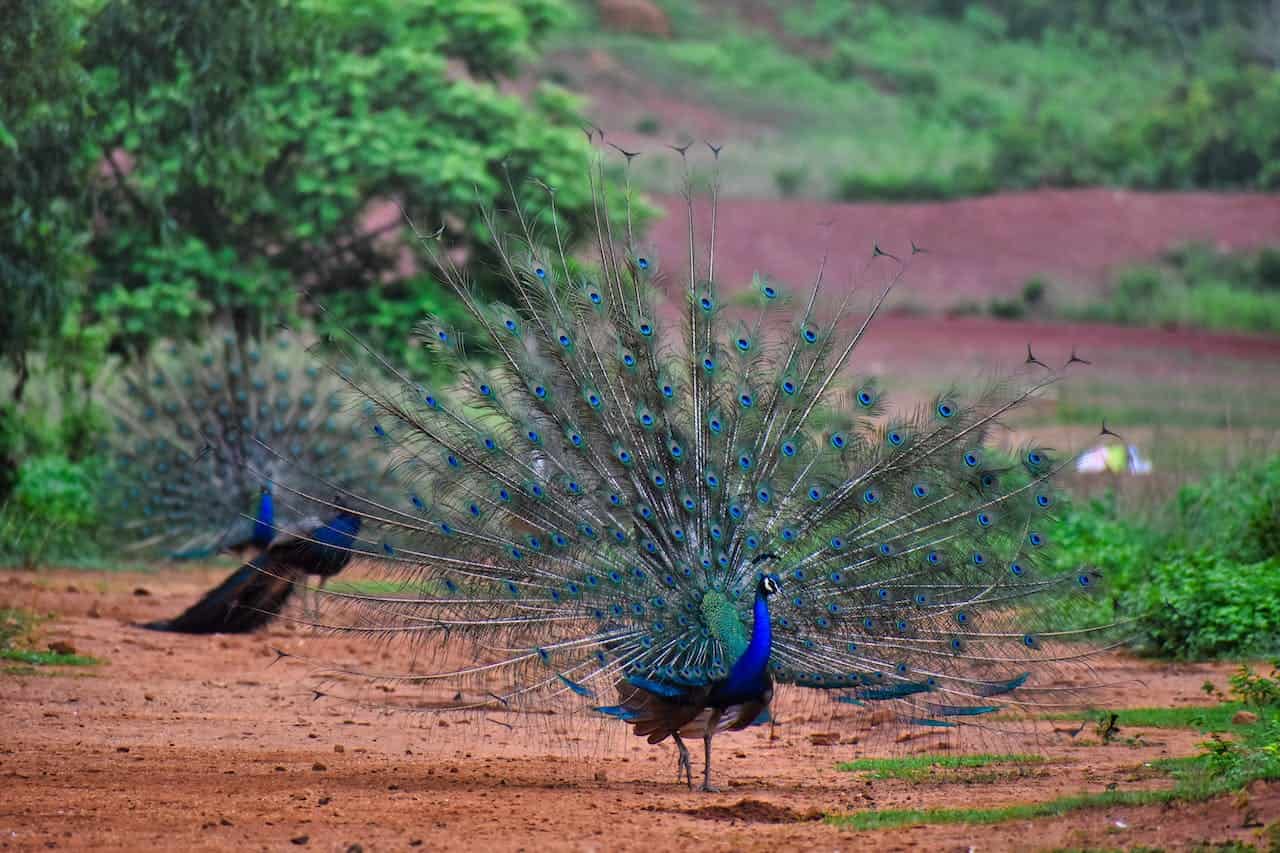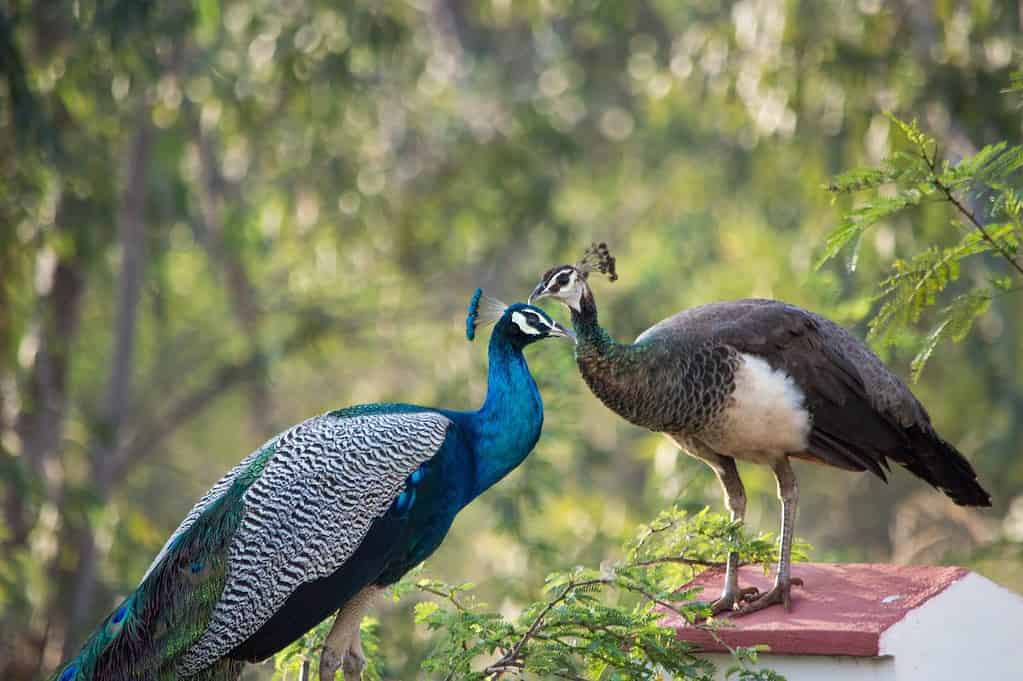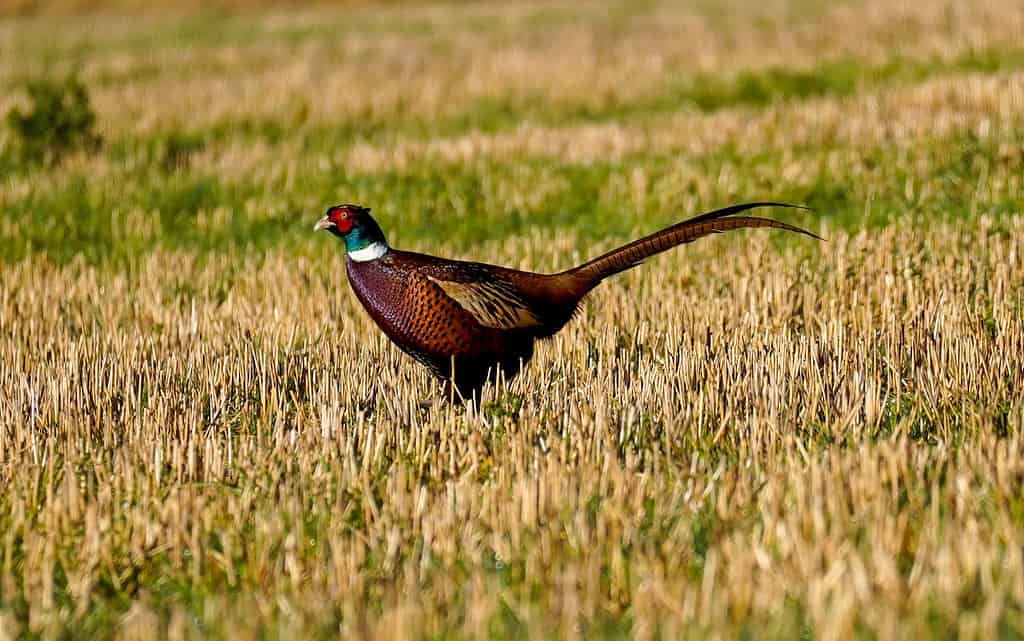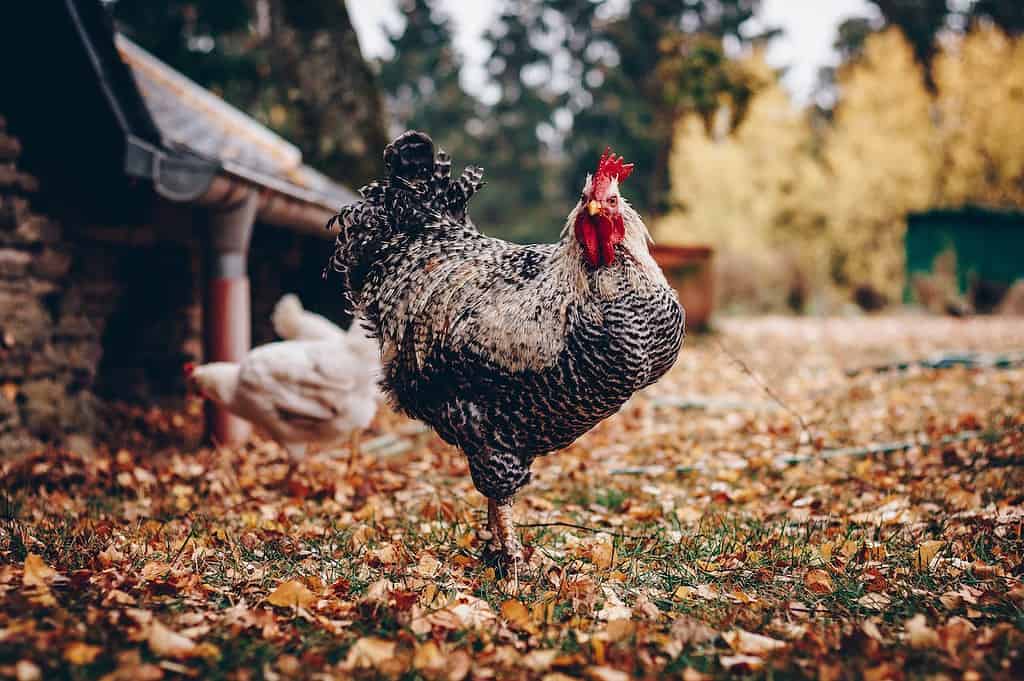
If you have ever come across peacocks, chances are that you’ve probably seen them strutting their stuff — flaunting their magnificent plumage — casually strolling about or exhibiting playful behavior such as leaping onto benches or branches. Sometimes you can even see them chasing you down. Yet, regardless of whatever activity these birds are engaged in, the probability that they are in the sky is very, very low.
So, what’s the deal? Are peacocks, like penguins, flightless birds? Well, not really. Peacocks can fly. They just do it very rarely (and very poorly). These birds fly for only around two percent of their entire lifetime. Even for the two percent of time that they do fly; they’re not flying very long distances. Unlike seasoned long-distance frequent flyers — like Wandering Albatrosses and Arctic Terns — peacocks do not fly with the intent to migrate, hunt, or even forage.
If and when they do fly, they kind of just take off. Their time in the sky is more of a leap or a gliding jump as opposed to an actual flight. The average peacock can barely cover a distance of around 300 meters (1,000 feet). Nor can they reach towering heights either. So, although they play the part of flightless birds quite well, peacocks aren’t incapable of flight. They just suck at it.
Let’s get some terms straight
Technically, peacocks don’t refer to a species of birds. It’s important to note that the term peacock is a bit of a misnomer. When people talk about peacocks, they’re talking about peafowls. Peacocks are male peafowl. The females of the species are called peahen. Every peacock is a peafowl but not every peafowl is a peacock: they’re peahens. Get it?

This distinction is important because peafowl are sexually dimorphic. The males (peacocks) and the females (peahens) look different from one another. This is especially true for the blue peafowl (Pavo cristatus), the species of peafowl most commonly known and distributed across the world. When we’re talking about pretty blue peafowl, we’re talking about peacocks. Only the male individuals of the species have a trail of iridescent feathers and a blue hue. Peahen, on the other hand, are kind of bland. Their bodies are colored a drab and toned-down hue of brown and they lack the long tail feathers that so well characterize the eccentric males.
Why does gender matter?
For starters, it’s a common assumption that the tail of the peacock impedes flight. By that same logic, it’s also natural to assume that only peacocks — male peafowl — are bad at flight. Although this might sound reasonable, this isn’t necessarily the case. Their plumage– although inspiring and impractical — doesn’t affect their flight as much as one would imagine.
In the wild, there’s a trade-off between looks and function. This concept, known as sexual selection, was coined and studied extensively by Charles Darwin. He wrote quite a bit about it in his books, particularly in The Descent of Man and Selection in Relation to Sex.
The peacock is one of the best examples of sexual selection in action. Peahens love peacocks with elaborate plumage. So, peacocks with excellent plumage and trains have a better chance of mating with peahens and raising chicks — thus ensuring their legacy. Sexually, it’s a win. However, it’s not a win-win overall. That’s because this plumage isn’t functional. Arguably, in some cases, this brilliant plumage renders males vulnerable in dangerous situations, like when evading predators.
“The train of the peacock is one of the most iconic examples of sexual selection in the animal kingdom. It has been thought that such elaborate ornamentation carries a functional cost for the bearer. These results therefore have broader ramifications for evolutionary biology’s understanding of sexual selection,” said Dr. Graham Askew, a faculty member at the University of Leeds School of Biomedical Science, in a press release.
Sexual selection in peacocks: does being pretty have a price?

What is the cost male peafowl incur for their elaborate and pretty train of feathers and more specifically, does this cost involve their ability to fly? A group of researchers from the University of Leeds, led by Dr. Askew, studied the flight mechanisms of peacocks to figure this out.
The team of researchers used 3D video cameras to observe the flight mechanics of five blue peacocks.
“These feathers weigh about 300 grams and can exceed 1.5 meters, so it’s expected that the male birds would be making a significant sacrifice in their flight performance for being attractive — possibly giving up their lives if the train restricts escape from predators such as tigers and leopards in their natural environment,” said Dr. Askew.
The high-speed 3D video cameras allowed the researchers to calculate the peacocks’ velocity at takeoff and the end of the second wing stroke.
As part of the study, the researchers recorded the flight of the five males with their elaborate train of feathers and then again without their train of feathers. The team cropped the train of feathers to mimic the natural process of molting — when the elaborate plumage of the males falls off after the breeding season.
To the surprise of the team, they were able to determine that the drag effect of the male peacocks’ tails had a trivial effect on their actual flight dynamics. The four-foot-long (and in some individuals, longer) train of feathers attached to the rear end of all male peacocks can not be blamed for their faulty flight.
If the results caught you off-guard, take solace in the fact that they surprised the researchers too. With the train or without, these birds are better off on the ground.
“Intuitively you expect that the train would detrimentally affect flight performance and so not finding a detectable effect was a bit surprising,” said Dr. Askew.
It may seem odd that the magnificent train does not weigh them down in flight yet the findings of the study make all the more sense when we consider the fact that peahens, as well as peacocks, are both terrible at flight. So now we know the entire species — not just male-gendered individuals — sucks at flight, but why exactly are peafowl so terrible at flight? That comes down to their body shape.
It’s a pheasant thing
Often confused with the proletariat, pheasants, or Phasianids, actually refer to a taxonomic group — a family — of birds. The family includes numerous genera and species of birds, including three of the most common and well-known birds in the world: peafowl, chickens, and turkeys.

Most species within the Phasianidae family are sexually dimorphic. The Himalayan Monal, in particular, looks like a mini peafowl. Right down to the flamboyant blue-hued males and drab females!
One common trait of all pheasants is terrible flight. These are walking birds, not flying ones. Think about it: how often have any of us seen flying turkeys or chickens? They’re much more comfortable — and formidable — on the ground, than in the sky.
Similar to peacocks, any flight we see from pheasants is limited to long leaps or vertical jumps. This preference comes down to their body design.
Pheasant morphology
All pheasants, regardless of their size, are built hefty. They’re heavy birds that don’t have the most aerodynamic shape. For instance, contrast the body of a falcon to that of a peacock. A falcon’s body is well-proportioned and streamlined. Notice their wings as well. A falcon’s wings are slender and pointed. The pointed wings minimize air resistance and facilitate swift, and more importantly, sustained flight. They allow for long periods of stabilized flight.
Peacocks, on the other hand, have broader, rounder wings. These types of wings allow for bursts of flight, like taking off into leaps and jumps, but not long sustained flights.
Basically, pheasants just aren’t designed for flying. As a matter of fact, pheasants are so well suited to walking, as opposed to flight, that certain species — like the chicken– have further been selectively bred to near flightlessness.

In an article with LiveScience, Michael Habib, a research associate at the Dinosaur Institute of the Natural History Museum in Los Angeles County, highlighted just how much humans have meddled with what little flight was left in chickens.
“They’re so close to being completely flightless that you don’t necessarily have to put a roof over them to keep them in,” said Habib.
Grounded, not doomed
It might seem like pheasants got the short end of the stick when it comes to being a bird. They’re not exactly flightless but nor can they actually fly. It’s perfectly valid to ponder if they’re even good at well…being birds. This all changes when we consider where pheasants live.
These birds don’t live in open grasslands or seaside cliffs. Rather, they dwell in places with dense vegetation, such as forests, grasslands, or agricultural fields. These habitats offer sufficient cover for foraging on the ground and are also resource-rich. In such habitats, birds do not need to migrate long distances to get what they need.
This is especially true for pheasants like peacocks. In their natural habitats, and even in the foreign lands they’ve been taken, these birds more often than not thrive. Peacocks have never actually needed to fly: the pretty birds do just fine slumming it on the ground.






